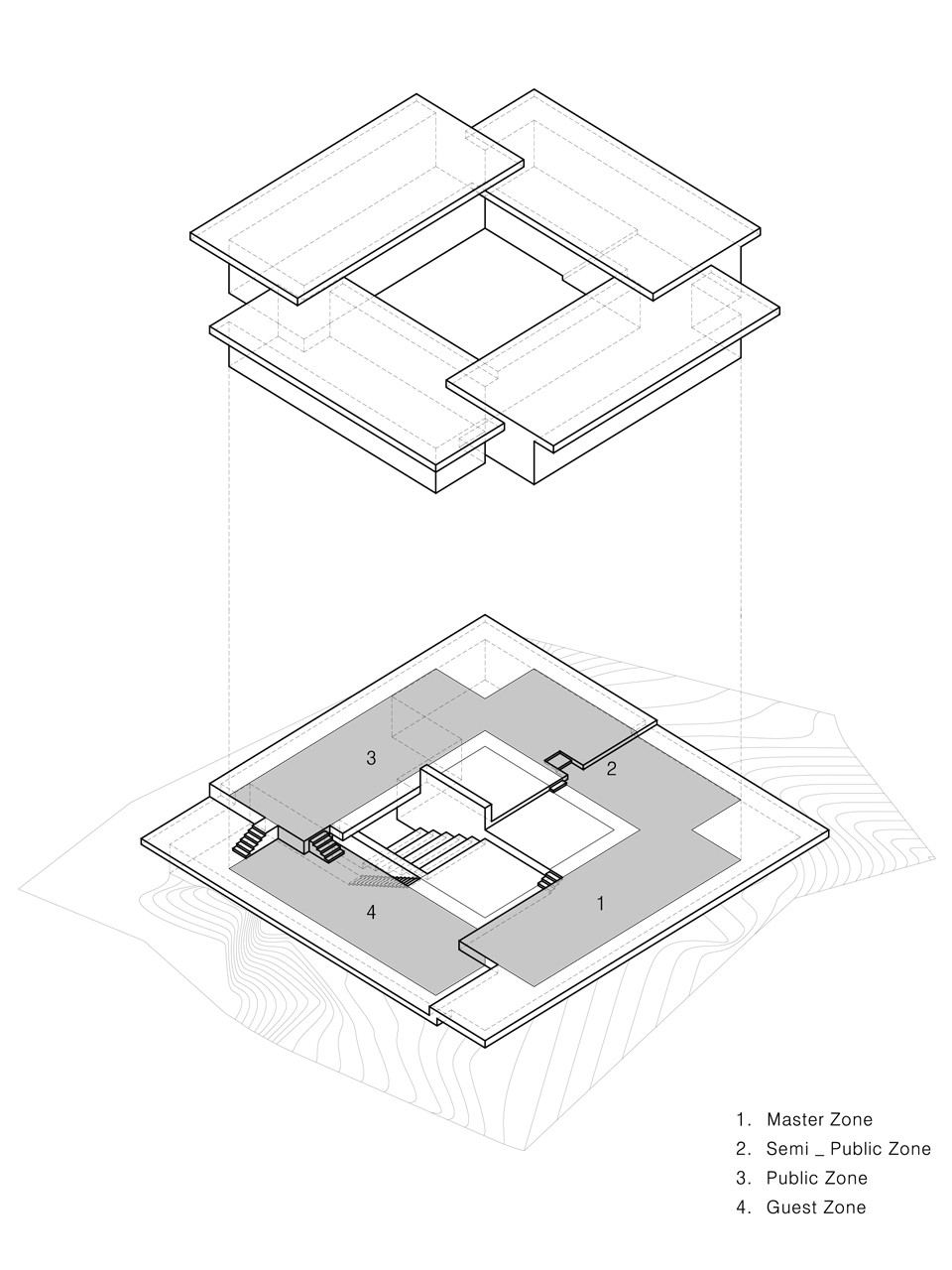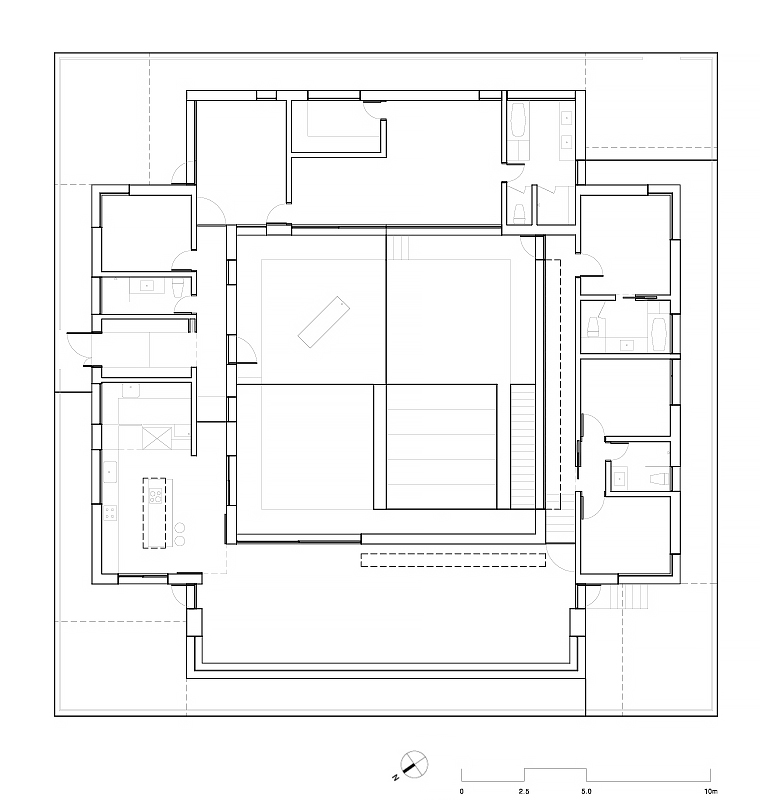Gangwon-do, Korea
Individualized Whole
As one becomes accustomed to living in apartments in Korea (which are typically generic), one grows to appreciate the convenience of a living room-centric plan, with direct access to other subsidiary rooms. However, there is also a lingering desire for certain isolated spaces, separated from the rest of the house. If so, then perhaps a certain intermediate condition – a spatial boundary that is neither purely isolated nor unified – may be more suitable for living.
I approached the project as a study of these intermediate spaces. I studied the relationships by looking at the house as a sum of its parts, then again as a part of a whole. I observed the relationships they formed with their surroundings, and how it affected them individually. As this study developed, I aimed to organize the house such that each space remains individual while also being able to reorganize themselves in various ways through their relationships with the intermediate spaces.
As a result, this house can be interpreted as a single house as well as four separate houses. It is a building that consists of the intermediate spaces that surround the four zones, the various relationships of inside and outside, and the dynamic combination of experiences of the overlapping programs. It is a sum of its parts, where they all retain their individual qualities while also creating new relationships with one another.




